The end of 2015 is rapidly approaching. Do you have everything in order so you can finalize this year’s tax planning? If not, that’s okay.
Given the frequency of tax law changes, there is no perfect time to begin planning. There’s no need to wait for certainty on laws that are in limbo either. This year, basic old-fashioned tax planning techniques can go a long way. Here are some suggestions.
Convert to a Roth
Despite the fact that you’ll pay federal income tax when you convert your traditional IRA to a Roth, making the switch can be a wise part of multi-year planning. For example, if the value of the investments in your traditional IRA is at a low point, you might consider using a partial conversion to “fill” a tax bracket. As you know, brackets are based on taxable income. By watching the breakpoints, you can manage the rate you’ll pay on the conversion. The idea is to pay tax at the lowest possible marginal rate.
The future benefit of making a conversion comes from the removal of assets from your traditional IRA. That can help reduce taxable income in a later year when you’re required to take withdrawals.
Get your basis right
Basis affects the amount of gain you report and pay tax on whenever you sell or exchange assets, so getting it right can mean tax savings. While your broker is required to track and report your basis for many securities, you are ultimately responsible for putting the correct numbers on your return. And, for tax planning to be effective, you have to be sure your basis is accurate before you decide which investment to sell.
You already know basis in investments such as stock is what you paid plus costs of buying and selling such as commissions. But you’ll want to keep a record of other changes to the stock too, including splits, which can affect your basis per share. Those records are especially useful if you’re not selling your entire investment.
For mutual funds, add reinvested dividends and capital gain distributions to your cost. Because you pay tax on those items in the year of distribution, they increase basis and reduce your overall gain.
Accurate basis information can also save you money if you funded a traditional IRA with nondeductible contributions in prior years. Those contributions reduce the taxable amount of withdrawals.
Maintain an up-to-date list of home improvements and renovations too. You can currently exclude up to $500,000 of gain from the sale of your home when you’re married ($250,000 when you’re single). But you have to meet the requirements to qualify, such as the rule that says you can claim the full exclusion only once every two years. Otherwise, you may be eligible for a partial exclusion or none at all.
Check retirement contributions
Contributions to your 401(k) plan made before year-end will reduce your adjusted gross income and may preserve credits and other tax benefits. Check now to make sure you’re on track to contribute the maximum for 2015. Why? In addition to being able to spread an increased contribution over remaining paychecks, you may have to give your employer time to make the payroll change.
You might also consider whether you can request that your employer put part or all of a year-end bonus into your 401(k). Just verify you’re making the most of your employer’s matching contributions.
For 2015, the maximum 401(k) contribution when you’re under age 50 is $18,000. You can add an additional $6,000 when you’re 50 or older.
Benefit from your home
Consider whether accelerating real estate tax and mortgage payments can help boost your itemized deductions for the year. One caution: Be aware of your exposure to the alternative minimum tax, as some itemized deductions are not allowed under the AMT calculation.
Another suggestion: Document home office use and expenses. While you have the option of choosing a simpler safe-harbor method for claiming the home office deduction, the only way to make sure you’re getting the most benefit is to compare the results from both methods.
Get your business expenses in order
When calculating your business income as part of your tax planning, take time to make sure you’ll be able to deduct all your expenses. For example, business expenses must be common in your field, and helpful and appropriate for your business – otherwise known as the “ordinary and necessary” rule. Remember, you’ll need enhanced records such as logbooks and receipts to deduct vehicle mileage and travel and entertainment expenses. Schedule recurring bills for payment before the end of the year, and learn what expenses you can prepay and deduct on your 2015 return. Separate personal and business expenses and reimburse yourself from the company checking account for any costs you paid with your own funds.
Plan how you’ll pay what you owe
Even the best planning generally can’t eliminate all tax liability. If your review shows you owe more tax than you’ve already paid in, look into tax-smart ways of paying. You want to be careful you don’t create more taxable income. That could happen if you sell stock or take distributions from retirement accounts to generate funds to pay your tax.
Also be aware of the penalty rules for underpayment of federal income tax. If you receive income not subject to withholding such as alimony or rent, increasing the amount withheld from your paycheck between now and the end of the year can help avoid a penalty. If you’re married and both working, remember to account for the 0.9% Medicare surtax when your joint income exceeds $250,000.
If you have questions about the Affordable Care Act and 2015 tax planning, please call.
This memo is intended to provide you with information about minimizing your taxes. Do not apply this general information to your specific situation without additional details. For details and guidance in applying the tax rules to your individual circumstances, please contact us.
©MC_4615-YE
